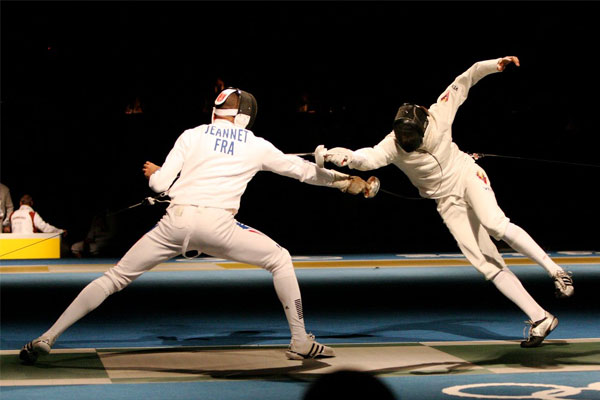Martial Arts Near Me
Fencing
Fencing, a captivating sport characterized by duels between two opponents wielding swords, has a rich history dating back centuries. It combines elements of martial arts, strategy, and athleticism, captivating the hearts of many enthusiasts around the world. In this exploration of fencing, we will delve into its origins, various techniques employed by fencers, and its current status as both a recreational activity and a competitive sport.
The origins of fencing can be traced back to Ancient Egypt, where wall paintings depict various forms of swordplay. However, it was in the 13th century that fencing truly emerged as a distinct art form in Europe. Initially developed as a means of self-defense, the swordplay techniques evolved into a discipline taught to knights and nobles. The Italian fencing masters of the Renaissance, like Agrippa and Fabris, further refined the techniques, establishing the foundation of modern fencing.
Throughout history, fencing techniques have been influenced by the prevailing weapons of the time. In the late Middle Ages and Renaissance, swords like the rapier and the smallsword were popular. These weapons allowed for intricate techniques with complex footwork and precise hand movements. However, with the advent of firearms, the prominence of swords in warfare diminished, leading to the development of sport fencing.

Modern fencing is divided into three disciplines: foil, épée, and sabre. Each discipline has distinct rules, scoring areas, and corresponding weapons. Foil, originating from the smallsword, is a thrusting weapon primarily targeting the torso. Épée, similar to the rapier, is a more weighty weapon with a larger guard, and the entire body is considered a valid target. Sabre, inspired by the cavalry sword, permits slashing as well as thrusting, focusing on the upper body, including the head and arms.
Techniques in fencing are diverse and intricate, requiring precision and agility. Footwork is vital, enabling fencers to move swiftly, evade attacks, and create opportunities for offense. Fundamental footwork techniques like advancing, retreating, lunging, and sidestepping are utilized to control distance and execute attacks or defensive actions. Proper body positioning, balance, and timing also play crucial roles in determining the success of a fencer's action.
Fencing bouts are characterized by exchanges of rapid, intricate movements between opponents. Attacks consist of direct thrusts or slashing actions, aiming to touch the opponent without being struck in return. Parrying, or blocking the opponent's attack, is achieved through intricate blade work and precise positioning. Ripostes, counter-attacks executed immediately after a parry, are another vital aspect of fencing techniques.
The modern status of fencing is multi-faceted, occupying both recreational and competitive spheres. Fencing clubs and schools offer training for beginners and enthusiasts of all ages. These venues provide a friendly and supportive environment for individuals to learn and engage in the art of fencing. Recreational fencers participate for various reasons, including physical fitness, mental stimulation, and the appeal of an elegant and historical sport.
Moreover, fencing has maintained its status as a highly competitive sport on the international stage. The prestige attached to the sport is evident in its inclusion in the Olympic Games since the first modern Olympics in 1896. Fencers from around the world train rigorously to compete at national and international levels, striving for the ultimate achievement of Olympic glory. The sport continues to evolve, with technological advancements incorporating electronic sensors to determine valid touches, enhancing the accuracy and fairness of the game.
Fencing also fosters valuable life skills beyond the sporting realm. As a combat discipline, it demands discipline, focus, and mental agility. Fencers develop physical fitness, coordination, and strategic thinking through the constant adaptation and analysis of their opponent's movements. Additionally, the sport fosters camaraderie, respect, and sportsmanship among fencers, as they engage in matches with a balance of competition and mutual respect.
Its origins as a self-defense discipline have transformed it into a sport that requires agility, precision, and mental acuity. As both a recreational activity and an internationally competitive sport, fencing embodies the essence of elegance, strategy, and discipline. Whether for personal development or passionate engagement, fencing continues to captivate individuals worldwide, embodying the timeless appeal of swordplay and its enduring relevance in the modern age.